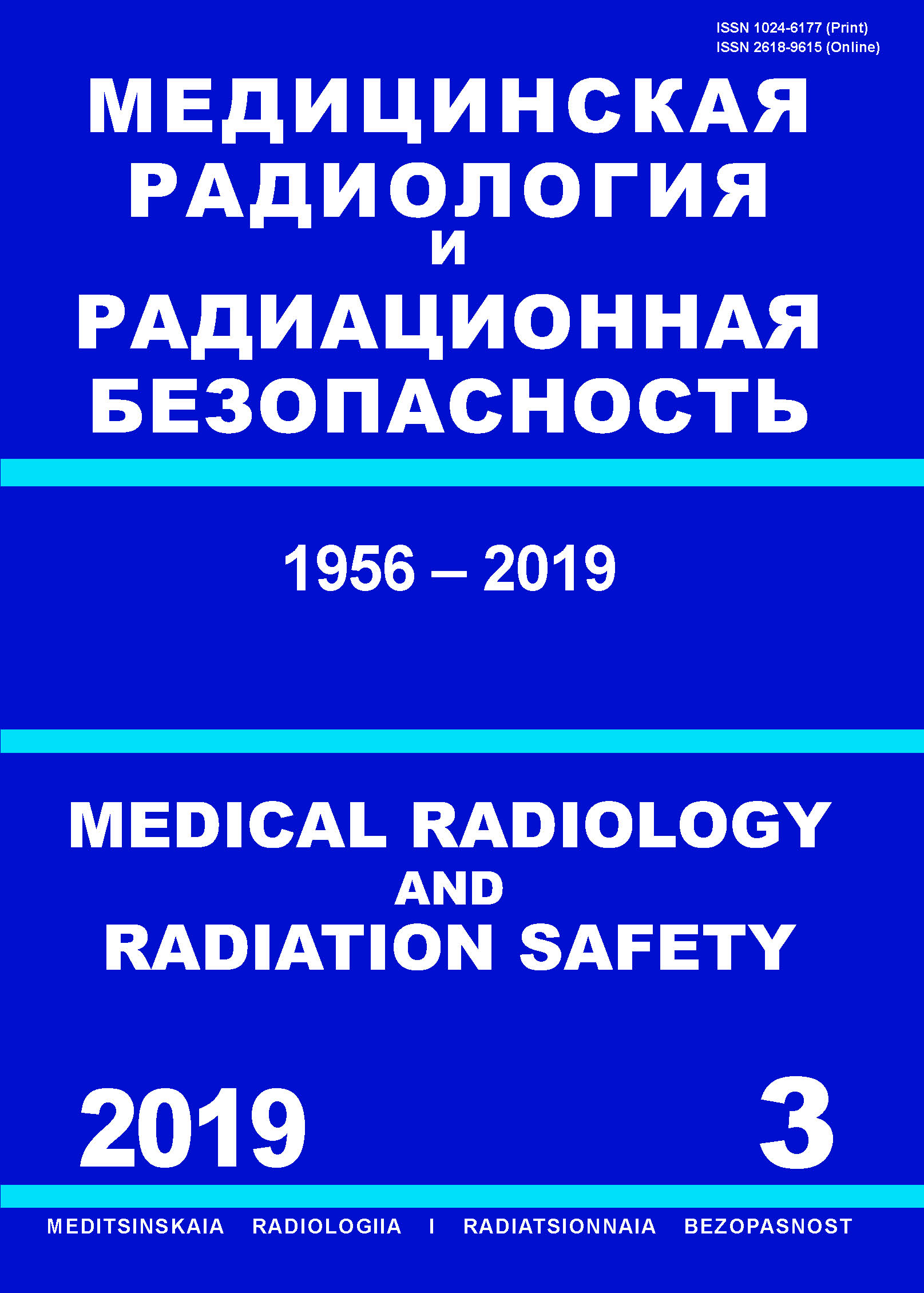Russian Federation
Russian Federation
Russian Federation
Russian Federation
Russian Federation
Russian Federation
Russian Federation
CSCSTI 76.03
CSCSTI 76.33
Russian Classification of Professions by Education 14.04.02
Russian Classification of Professions by Education 31.06.2001
Russian Classification of Professions by Education 31.08.08
Russian Classification of Professions by Education 32.08.12
Russian Library and Bibliographic Classification 51
Russian Library and Bibliographic Classification 534
Russian Trade and Bibliographic Classification 5708
Russian Trade and Bibliographic Classification 5712
Russian Trade and Bibliographic Classification 5734
Russian Trade and Bibliographic Classification 6212
Purpose: Estimate of the excess relative risk of malignant neoplasm disease (MND) in nuclear industry workers, participants in the elimination of the consequences of the Chernobyl accident, taking into account the doses of various types of irradiation. Material and methods: An epidemiological experiment was conducted in which the personal data of the information base of the Industry Register of persons exposed to radiation as a result of the Chernobyl accident, the doses of occupational exposure, and tabular data on the dose of natural exposure, presented in the reports on the radiation situation in populated areas ESKID, No. 4-DOZ) were used. Results: It is shown that the risk assessment of the disease in the Chernobyl accident liquidators, obtained with the use of doses of different types of exposure, has different risk indicators (ERR at 1 Sv: the Chernobyl NPP radiation dose is 0.13, the ChNPP + professional dose is 1.13 and the ChNPP dose + professional + natural – 0.56). Conclusions: Using any part of the total radiation dose of a person to calculate the risk of dose-induced diseases, we will get incorrect results is unknown how far from the truth. For a reliable assessment of the risk of the disease, an overall dose is required from a person from all types of radiation, which is required by the radiation safety directives.
cancer, liquidators, Chernobyl nuclear power plant accident, radiation risk, doses of various types of irradiation, total dose
1. Pierce D, Preston DL. Radiation-related cancer risks at low doses among atomic bomb survivors. Radiat Res. 2000 Aug;154(2):178-86.
2. Kato Kazuo, Sawada Shozo. Medical X-ray Doses’ Contributions to the Ionizing Radiation Exposures of Atomic-Bomb Survivors. J Radiat Res. 2016 Nov;57(6):583-95.
3. Chekin SYu, Maksyutov MA, Kashcheev VV, Menyajlo AN, Vlasov OK, Shchukina NV, et al. Prognosis of the long-term medical radiological consequences of the Chernobyl disaster for citizens of Russia and the Republic of Belarus on the main radiation-related diseases. Radiation and Risk. 2016;25(4):7-19. (Russian).
4. Ivanov VK, Rastopchin EM, Chekin SYu, Ryvkin VB. Oncological morbidity and mortality among participants in the liquidation of the consequences of the Chernobyl disaster: an assessment of radiation risks. Radiation and Risk. 1995;6:123-55. (Russian).
5. Tukov AR, Biryukov AP, Shafranskij IL. The use of data on the doses of various types of irradiation in radiation epidemiology. Medical Radiology and Radiation Safety. 2014;59(1):43-9. (Russian).
6. Tsovyanov AG, Kosterev VV, Kryuchkov VP, Romanov VV, Pocyapun NP, Kuhta BA, Sivenkov A.G. Informational and analytical reference book “Doses of exposure of personnel of organizations and the population in the territories served by FMBA of Russia and the Ministry of Defense of Russia in 2010”. Moscow. 2012. 86 p. (Russian).
7. EPICURE, Users Guide. Preston DL, Lubin JH, Pierce DA, McConney ME. HiroSoft International Corporation. Seattle, WA 98112, USA. 1993. 329 p.
8. Tsyb AF, Ivanov VK, Biryukov AP. Possibilities of radiation epidemiology in solving radiation safety problems of medical exposure. Radiation and Risk. 2008;17(2):50-62. (Russian).
9. Kato K, Antoku S, Russell WJ, Fujita S, Pinkston J.A, Hayabuchi N, et al. Radiation therapy among atomic bomb survivors, Hiroshima and Nagasaki. Radiat Res. 1998 Jun;149(6):614-24.





